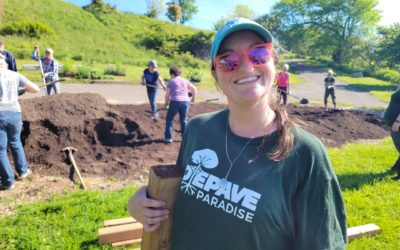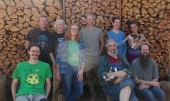The background: I joined a thread a couple of days ago about food forests, and part of it turned into a tangential permie rabbit-hole, which is one of the things that I love about this site's potential. It ignites fires in my imagination and makes me want to find more fuel and bring people around the fire for a night of debauchery or just a potluck.
Anyway, in this thread about food forests, Ben Zumeta wrote:
Keep in mind that all the coastal forests of temperate North America supported immense runs of anadromous fish like salmon, which were possibly the single most nutrient-dense and healthy food sources on Earth.
And I responded:
Yes, Ben. for sure. Even here up here in the Rockies where some of the coastal salmon come to spawn, the salmon/bear/big tree/clean spawning gravels/salmon/bear/big tree connection is a major element in some of our intact watersheds.
and Jay Angler further responded to my post:
In urban areas, people don't want the bear part of the equation, but we need to push for less hardscape and more infiltration ponds so the creeks where the salmon fry grow don't dry up in the droughts. Even small streams could help the salmon recover if we facilitated it by things like gravel parking lots instead of tarmac!
Now Ben may have been thinking about something different than the direction of my response, and Jay me be thinking in a different direction from me, but I'm grooving with lots of possibilities in my brain so I am going to figure on the angle that works with Her post.
In that regard, I went on an internet search looking for alternatives for pavement in parking lots which is kind of odd considering that I started in a thread that was about making a food forest in an actual forest instead of from scratch in say a grassed yard.
Anyway, back to the darker depths of the rabbit-hole: I was trying to find some kind of system that could take traffic and yet infiltrate water. I'd seen some systems like this, using brick-type cobbles where the bricks had a space in their form and in that space grass or moss or something could be growing. When water hits it, the water infiltrates into the ground while watering the plants. But what I found was something pretty cool, and it took me down a memory lane from nearly 20 years ago, as it reminded me of a community garden that I was a part of in East Vancouver, Canada called MOBY (My Own Backyard). Moby's name was a response to the NIMBY (Not In My Backyard) idea where people didn't want addiction services or transitional houses for people coming out of rehab, jail, or situations of physical or sexual abuse. Moby was a place of inclusion, and we ripped up a parking lot and built gardens there.
Anyway, here's the article that I found that sort of inspired me to make this thread.
Perhaps Urban Permies will take this task to heart.
Depave Paradise in Ontario, follows Portland Oregon Depave lead
In this space that used to be a large parking lot for a Canadian Tire in Peterborough Ontario, the reclaimed land was planted with 35 trees and shrubs with another 1000 more plants planned for later that year. That was 4 years ago.
Here is the
Depave Paradise Website 
Viva la revolucion








